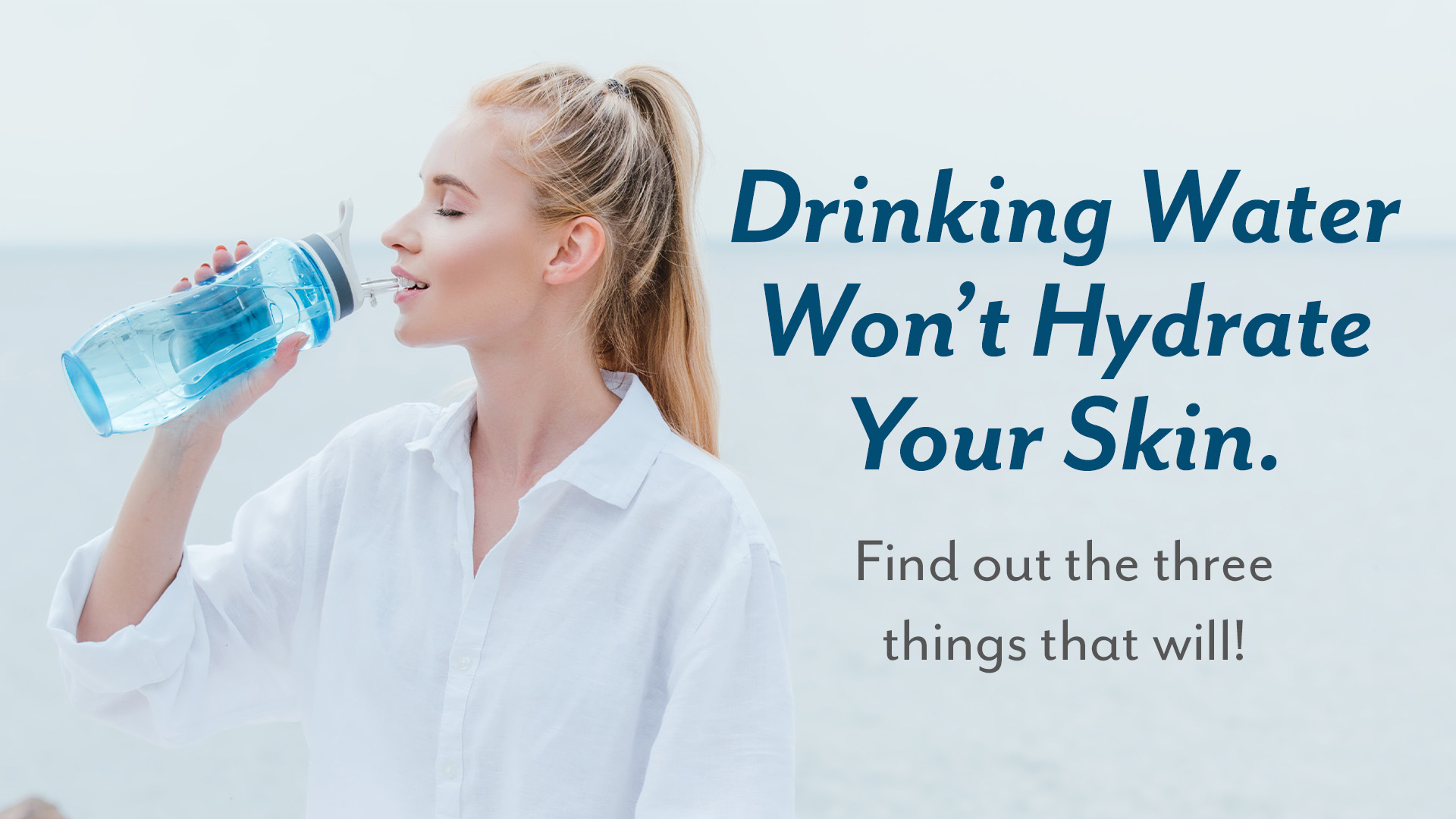By Kendall Farr, Licensed Esthetician, SPADA Skincare
That water drinking is vital for healthy hydration isn’t exactly breaking news. But here’s some common myth-busting: drinking water doesn’t hydrate your skin. Water drinking does flush your digestive system as it runs through your intestines, it’s absorbed into your bloodstream, is then filtered by your kidneys and ultimately it will hydrate the cells inside your body. There is research to support that water hydrates your dermis (the deepest layer of your skin) but not your epidermis (the top layer). If you’re experiencing a dehydrated barrier—regardless of your skin type—how you hydrate your skin externally makes all the difference for radiant skin health.
Here are three things that will hydrate your skin:
Use a Hydrating Mist
This step is vital and here’s why: instant hydration is the essential benefit of using a mist. But mists also remove trace residue from cleansing along with the minerals, salt, and chlorine that are deposited on skin from tap water. Imagine wiping liquid soap on your face and then not rinsing it off. You wouldn’t. Ever. Now, picture the soapy film that develops on your glass shower door and you have an unhealthy image of what is sitting on your skin when it isn’t removed. And, yuck. Soap and mineral residues interfere with the absorption of any moisture you apply to your skin. They also impede the flow of sebum: the oil your skin produces to lubricate your barrier. When your skin is not balanced by your natural oil it also loses much-needed water that helps keep it hydrated.
Mists contain added humectants like hyaluronic acid (it attracts water and holds hydration in the skin) that saturate your skin cells with water. Leave your skin damp with mist after you apply it. This post-cleansing step is key. Damp skin will absorb the hydrating serums and moisturizers you apply next. This will give your skin a dewy-looking surface. An effective formulation will contain essential amino acids that mimic the NMF (natural moisturizing factors) found in the skin to lock in moisture. Hydration is the goal here so make sure you are using a formulation with both hydrators and humectants like the blend of hyaluronic acid and sodium hyaluronate found in GM Collin Hydramucine Mist.
What’s the difference between a mist and a toner?
Toners have two main purposes: to constrict your pores and to make your skin look firmer. To do this they generally contain an astringent. Very oily skins benefit from a light astringent, but if your goal is to soothe and hydrate your skin, skip toners and use a mist. Toners have ingredients like SD alcohol 40, denatured alcohol, and exfoliating acids—all ingredients used to control oil, mattify acne-prone skins, and exfoliate the surface.
Use Serum Under Your Moisturizer
To boost hydration, apply a serum before applying your moisturizer. This one step can dramatically improve moisture levels in the skin. Look for thirst-quenching ingredients like hyaluronic acid, sodium hyaluronate, and glycerin. GM Collin Hydramucine Optimal Serum is formulated with hyaluronic acid in numerous molecular weights. Why does this matter? Molecular weight drives ingredients deep into the skin so that they are absorbed from the top layer of the skin (epidermis) to the bottom layer (dermis). The primary benefit is immediate barrier-replenishing moisture that lasts for 24 hours. Apply moisturizer on top of your serum to seal in the hydration for a glowing finish.
Use A Gel-Based Mask
In general, using a mask a few times a week is a great way to give your skin a moisture boost. But when it comes to delivering deep, water-based hydration, using a gel formulation is the most effective. Gels naturally have a lower temperature than creams so they feel instantly cooling on the skin. A gel that infuses the skin with essential minerals like algins (water-filled marine plants) like GM Collin Aqua Mask is a perfect thirst-quencher for dehydrated skin. Gels also reduce redness (especially good to balance summer heat) along with visibly restoring suppleness to the skin. You can use a gel mask as often as every night. Apply it after cleansing and before applying your hydrating toner, serum, and moisturizer. A perfect summer beauty hack: put your gel mask in the fridge for 30 minutes before use.
Here’s A Real Benefit of Drinking Water
Love salt? Hate puffy morning eyes? Water drinking is your ally. If you tend to retain excess fluid—especially around your eyes—be sure to double up on your water intake in the evening to help manage fluid retention in your face and body. The cells in your body require water to live, so give them what they need most. But keep in mind that for dewy-looking skin, it’s topical hydration provided by the right routine for your skin type (and level of dehydration) that supports your facial skin. And if you feel like your skin looks better when you drink a lot of water it is likely due to a boost in blood circulation produced by water intake that makes for a brighter look. That’s a plus, but be sure you are hydrated as well.
And one more thing that’s important to understand in caring for your skin. There’s a difference between dry and dehydrated skin. Read about that distinction here. Each condition needs to be addressed differently. In short, dry skin needs oil and dehydrated skin needs water. Consult with your esthetician to put together the most effective skincare routine for your unique hydration needs.

